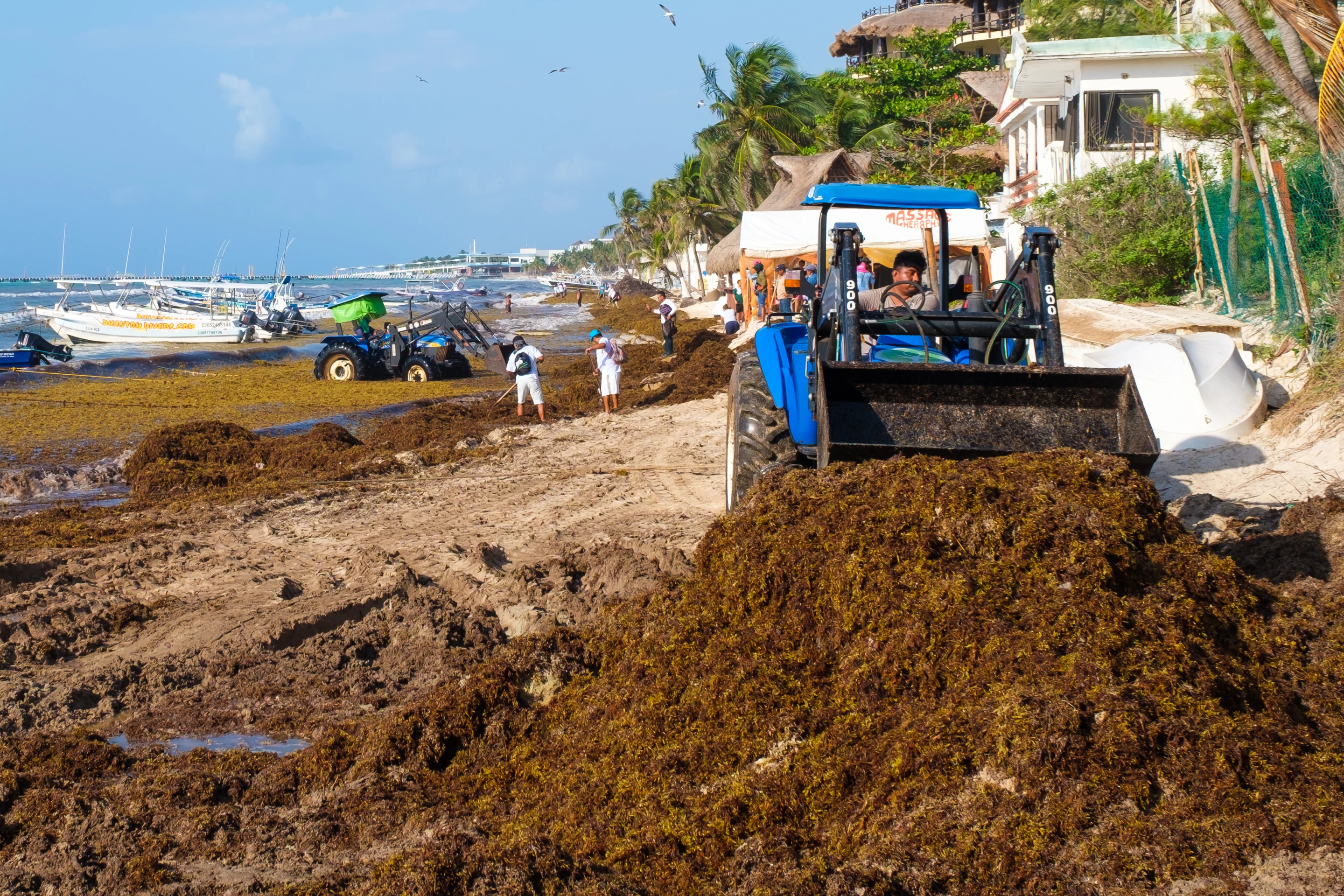Thanks to factors such as agricultural fertilizer runoff, Sargassum seaweed is growing out of control in many regions – it washes up on beaches in huge amounts. Utilizing a new technique, that rotting organic matter could soon be converted into biofuels and other products.
Ordinarily, the processing of seaweed involves straining it out of salt water, rinsing it in fresh water, then drying it. According to the University of Exeter's Prof. Mike Allen, though, "the costs of these processes can be prohibitively high." Along with colleagues from the University of Bath, he set out to develop a cheaper, more commercially viable alternative.
The resulting process doesn't require the waste seaweed to be removed from the salt water. Instead, it begins with two types of catalysts being added to a vat of the vegetation. These chemicals release sugars from the seaweed, that can be used to feed a special yeast which in turn produces a substitute for palm oil.
Additionally, the catalysts prepare the seaweed for the next phase of the process, which is known as hydrothermal liquefaction. In a nutshell, this involves subjecting the material to high temperatures and pressures. The end products are a bio-oil that can be further processed into fuels, along with what is described as a high-quality, low-cost fertilizer.
And as an added bonus, if any pieces of plastic waste are present in the washed-up seaweed, those are likewise converted into bio-oil – so they do not need to be removed prior to processing.
"For the first time this study demonstrates that, rather than a hindrance, the presence of saltwater can be helpful," says the lead scientist, U Bath's Prof. Christopher Chuck. "The oil industry creates a variety of products including liquid fuel, plastics and fertilizers – and we can benefit from a similar flexibility. We can simply alter the process conditions to produce larger or smaller amounts of specific by-products, allowing us to have met variable demand."
The research is described in a paper that was recently published in the Journal of Chemical Technology and Biotechnology.
And this isn't the only potential use for Sargassum seaweed. Previously, scientists from Spain’s University of Alicante announced a method of utilizing it as a source of biomass for power plants. Additionally, a team from from Germany's Fraunhofer Institute for Chemical Technology has converted a different type of seaweed waste into high-quality building insulation.
Source: University of Bath




